Are you fascinated by Mexico’s vibrant culture and rich history? A Fun Fact About Mexico is that it boasts a diverse range of attractions for LGBTQ+ travelers, and gaymexico.net is your ultimate guide to discovering the best of them. Whether you’re seeking thrilling adventures or tranquil escapes, Mexico offers something for everyone, and we’re here to ensure your journey is unforgettable with gay-friendly travel tips, LGBTQ+ events, and inclusive destinations.
1. Is Mexico Home to the Second-Largest Coral Reef in the World?
Yes, Mexico is home to the Mesoamerican Reef System, the second-largest coral reef in the world. This stunning barrier reef stretches 1,000 kilometers (621 miles) along the Caribbean coast, spanning Mexico, Belize, Guatemala, and Honduras. Only the Australian Great Barrier Reef is larger.
The Mesoamerican Reef System is a vibrant underwater ecosystem teeming with marine life. Divers and snorkelers can explore its colorful coral formations and encounter diverse species such as tropical fish, sea turtles, and even whale sharks during specific seasons. According to the World Wildlife Fund (WWF), the Mesoamerican Reef is home to over 65 species of stony coral, 350 species of mollusks, and more than 500 species of fish. This rich biodiversity makes it a must-see destination for nature enthusiasts.
If you’re planning a visit to the Riviera Maya, consider an excursion to Isla Mujeres by catamaran. Snorkeling gear will allow you to witness the stunning underwater beauty and swim alongside gentle sea turtles. For a more adventurous experience, you can swim with Mexican whale sharks, which visit these waters between May and September and can grow up to 12 meters (39 feet) in length. These gentle giants offer a unique and unforgettable encounter.
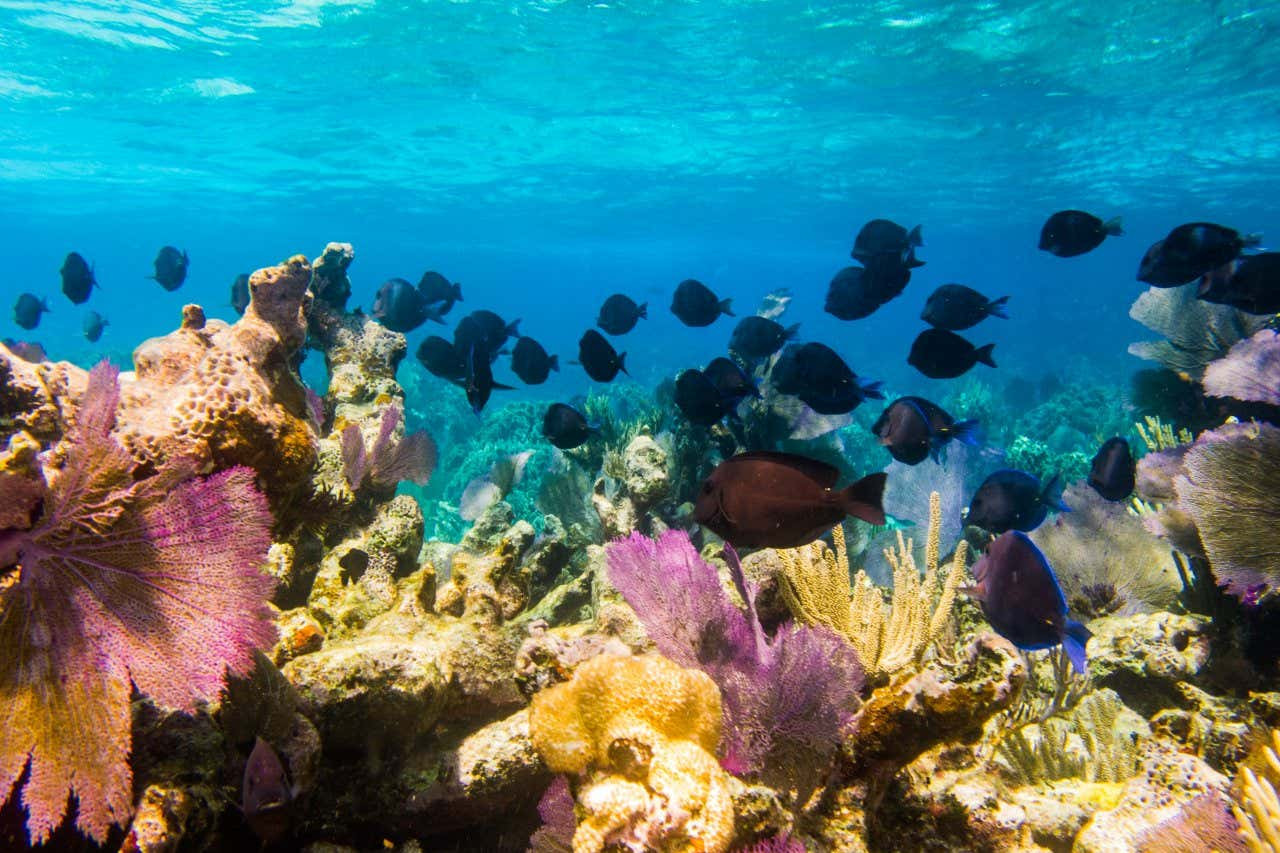 Multiple fish swimming around the Mesoamerican Barrier Reef.
Multiple fish swimming around the Mesoamerican Barrier Reef.
2. Did You Know There Are 68 Recognized Languages in Mexico?
Yes, it’s true that Mexico recognizes 68 languages, showcasing its rich cultural diversity. While over 99% of the population speaks Spanish, the Constitution of Mexico does not declare an official language. Instead, it acknowledges and protects 68 languages, 63 of which are indigenous.
The recognition of these indigenous languages underscores Mexico’s commitment to preserving its cultural heritage. According to the National Institute of Indigenous Languages (INALI), these languages represent a significant part of Mexico’s identity and history. Some of the most widely spoken indigenous languages include Nahuatl, Maya, Zapotec, and Mixtec. Each language carries its unique traditions, stories, and worldview, contributing to the rich tapestry of Mexican culture.
3. Does Mexico City Have the 2nd Most Museums in the World?
Yes, Mexico City boasts an impressive collection of 170 museums, making it second only to London (with around 200) in terms of the number of museums in a single city. This makes Mexico City a paradise for museum enthusiasts, offering a wide array of cultural, historical, and artistic experiences.
Among the many museums, the National Museum of Anthropology stands out as a must-visit. It houses the world’s largest collection of ancient Mexican art, providing a comprehensive overview of the country’s pre-Hispanic civilizations. According to the museum’s official website, its exhibits showcase artifacts from the Olmec, Maya, Aztec, and other cultures, offering invaluable insights into their history and achievements.
For art lovers, the Frida Kahlo Museum is another highlight. This museum offers an intimate look into the life and work of the iconic Mexican artist, featuring her personal objects, artworks, and photographs. A visit to these museums provides a deep appreciation for Mexico’s rich cultural heritage.
4. Is It True Mexico Has 35 UNESCO World Heritage Sites?
Yes, Mexico proudly boasts 35 UNESCO World Heritage Sites, reflecting its rich culture, history, and natural beauty. These sites include 27 cultural sites, 6 natural sites, and 2 mixed sites, showcasing the country’s diverse heritage.
The historic center of Mexico City and Xochimilco were among Mexico’s first World Heritage Sites, recognized by UNESCO in 1987. According to UNESCO, these sites are recognized for their outstanding universal value and their significance in preserving human history and natural wonders. Mexico’s World Heritage Sites range from ancient ruins like Teotihuacan and Chichen Itza to natural reserves like Sian Ka’an and El Pinacate and Gran Desierto de Altar Biosphere Reserve.
Visiting these sites offers a unique opportunity to step back in time and appreciate the country’s rich heritage. A tour of Coyoacán & Xochimilco allows you to experience the beauty and history of these iconic locations firsthand.
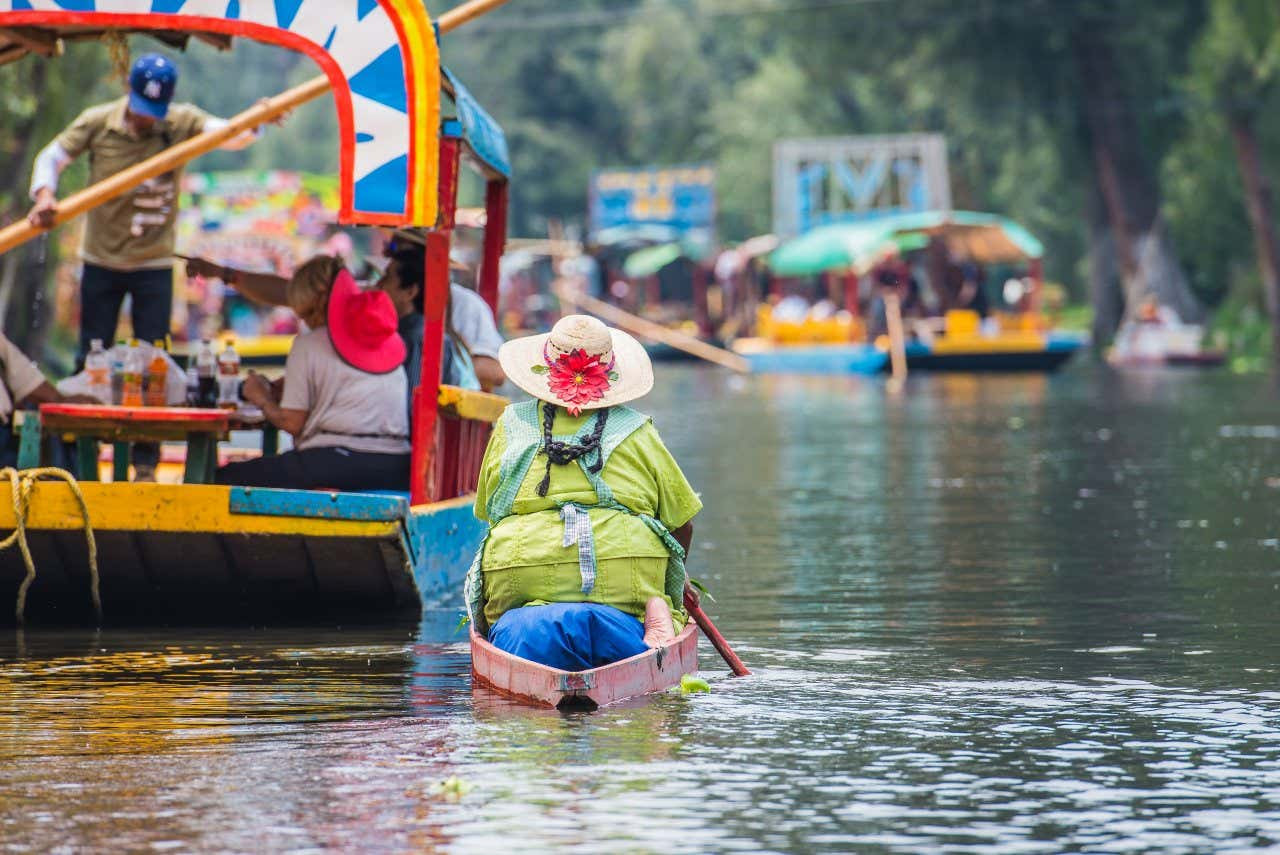 Xochimilco canal with people sailing down it on colourful boats.
Xochimilco canal with people sailing down it on colourful boats.
5. Was The Day of The Dead’s La Catrina Created as a Satire?
Yes, the iconic La Catrina, a central figure in Mexico’s Day of the Dead celebrations, was originally created as a satire. Designed by José Guadalupe Posada, La Catrina was intended to critique the high-society European obsessions of the Porfirio Diaz era.
La Catrina’s image, a skeleton dressed in elegant European clothing, was a commentary on Mexicans who aspired to European lifestyles while neglecting their own cultural roots. According to the Museo Nacional de la Historia Mexicana, Posada’s creation was a form of social critique, using satire to highlight the disparities and cultural complexities of the time.
Today, La Catrina has become a beloved symbol of the Day of the Dead, representing the celebration of life and remembrance of loved ones. If you visit Mexico City during the festival, be sure to experience the vibrant Day of the Dead night tour.
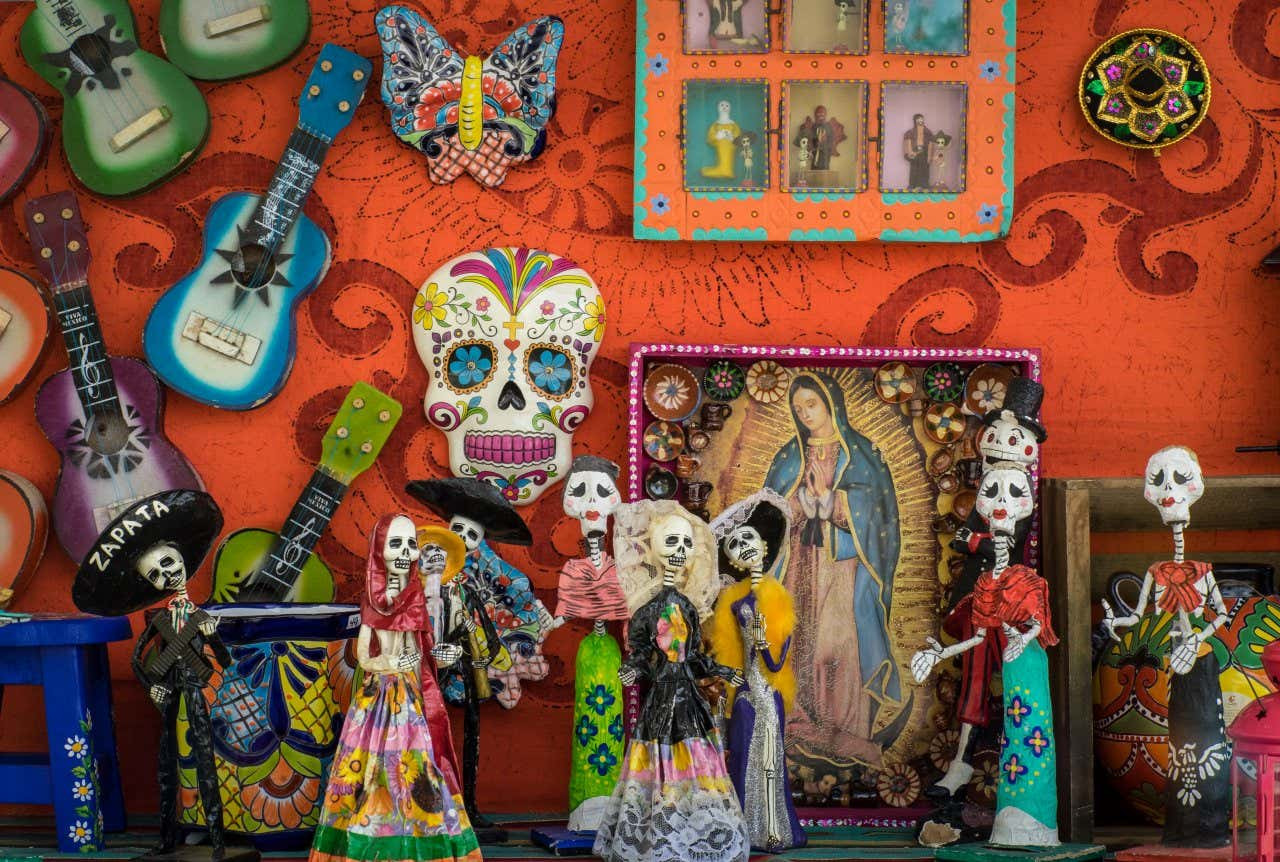 Multiple figures with the typical La Catrina skull design in front of a red wall with skulls and guitars on it as decoration.
Multiple figures with the typical La Catrina skull design in front of a red wall with skulls and guitars on it as decoration.
6. Is Mexico Home to the Largest University in Latin America?
Yes, the National Autonomous University of Mexico (UNAM) is indeed the largest university in Latin America. Founded in 1551, UNAM has multiple campuses across Mexico City and is renowned for its extensive research and high academic standards.
UNAM is not only the largest but also considered one of the best universities in the world. According to the QS World University Rankings, UNAM consistently ranks among the top universities globally, recognized for its contributions to research, innovation, and education. The university offers a wide range of academic programs, attracting students from all over the world.
7. Is There a Park with Ruins from the Mesoamerican Pre-Classical Period in Mexico City?
Yes, right in the heart of Mexico City, you can find Chapultepec, a sprawling park that contains ruins dating back to the Mesoamerican pre-Classical period. This expansive park, covering over 678 hectares, is filled with historical treasures that span thousands of years.
Chapultepec Park is not only a green oasis in the bustling city but also a significant historical site. It houses the National Museum of Anthropology, the National Auditorium, and even a neoclassical castle. According to the Secretaría de Cultura de la Ciudad de México, the park has been a vital part of Mexico City’s history since pre-Hispanic times, serving as a refuge for rulers and a site for important battles during the US-Mexican War.
Legends abound within the park, including tales of a door to the underworld from Nahuatl legends and a pool where Moctezuma took healing baths. To uncover more of these hidden gems, consider taking a free tour through the Chapultepec forest.
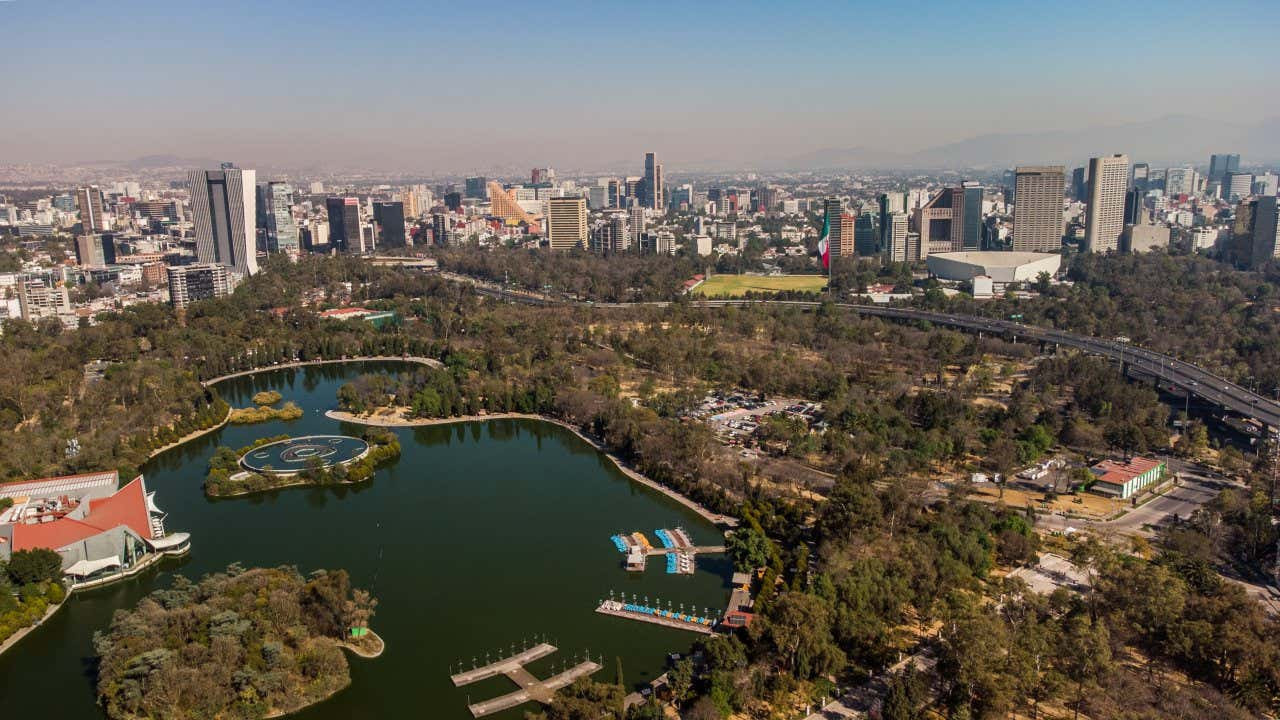 An aerial view of Chapultepec park with Mexico City seen across it.
An aerial view of Chapultepec park with Mexico City seen across it.
8. Is The Mexican Flag Full of Symbolism?
Yes, the Mexican flag is rich with symbolism, with each element representing different aspects of the country’s history and identity. The flag features three vertical stripes: green, white, and red, each with its own significance.
The symbolism of the colors has evolved over time, but commonly, green represents hope, white symbolizes unity, and red signifies the blood shed by national heroes. However, the central emblem of the flag, depicting an eagle devouring a snake perched on a cactus, holds deeper historical meaning. This image is derived from the legend of the Mexica Empire, which recounts how Tenochtitlan, now Mexico City, was founded. According to the legend, the citizens of Aztlán were instructed to search for this sign, which would mark the location of their new capital.
To delve deeper into the history of this unique civilization, consider taking a guided tour of the Museo del Templo Mayor de Tenochtitlan.
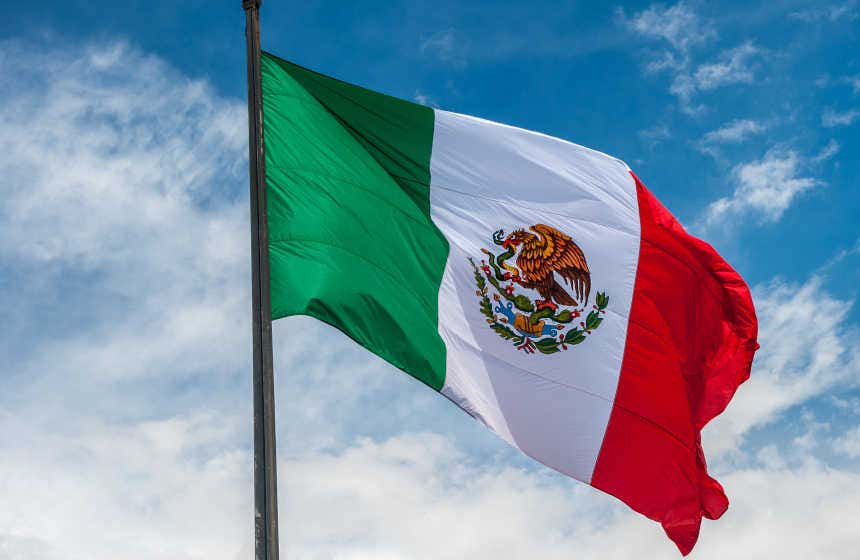 A close-up of the Mexican flag with a blue sky and some clouds behind it.
A close-up of the Mexican flag with a blue sky and some clouds behind it.
9. Do Volcanoes and Mythology Intertwine in Mexico?
Yes, in the state of Puebla, you’ll find Izta-Popo Zoquiapan National Park, a place steeped in mythology and natural beauty. The park is dominated by the Iztaccíhuatl and Popocatépetl volcanoes, both towering over 5,000 meters (16,404 feet) in altitude.
According to the mythology of the Tlaxcala people, these volcanoes represent the princess Iztaccíhuatl and the warrior Popocatépetl, who are destined to remain together until the end of time. These mountains were revered as deities and servants of the rain god Tlaloc. Archaeological sites found in nearby caves provide evidence of ancient rituals performed in their honor. According to the Instituto Nacional de Antropología e Historia (INAH), these sites offer valuable insights into the religious practices of pre-Hispanic cultures.
Today, a group continues to uphold some of the Nahuatl traditions. For an up-close view of these majestic deities, consider an excursion to the Popocatépetl and Iztaccíhuatl Volcanoes. The panoramic views from above are simply breathtaking.
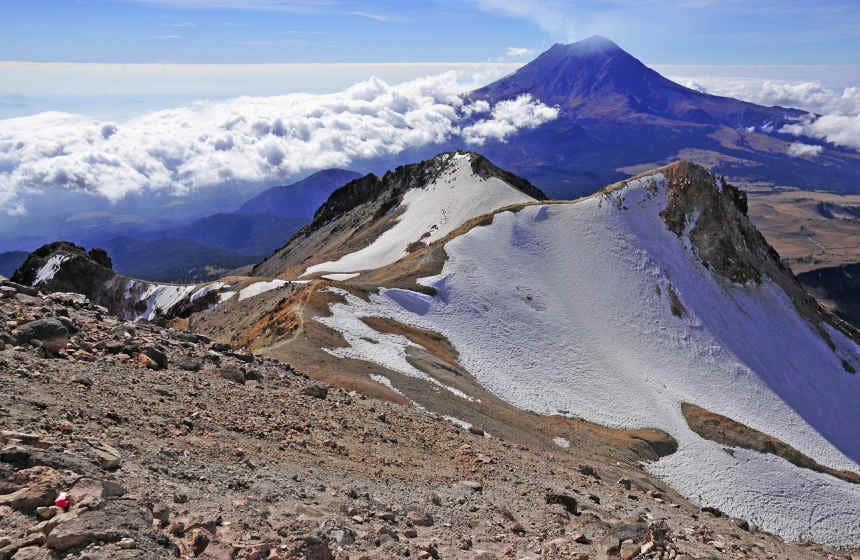 Iztaccíhuatl and Popocatépetl Volcanoes under a cloudy sky.
Iztaccíhuatl and Popocatépetl Volcanoes under a cloudy sky.
10. Did Mexico Bring Chocolate to Europe?
Yes, Mexico is indeed the origin of chocolate, introducing this delightful treat to Europe. Ancient Mexican civilizations, including the Olmecs, Aztecs, and Maya people, cultivated cacao trees for over 3,000 years.
Chocolate held significant cultural and religious importance in these societies. According to the book “True History of Chocolate” by Sophie D. Coe and Michael D. Coe, cacao beans were used as currency, offered to the gods, and consumed in ritual ceremonies. The Aztecs believed that cacao was a gift from the god Quetzalcoatl, and they prepared a bitter drink called “xocolatl” from the beans.
Following the Spanish conquest of the Aztec Empire, chocolate was brought to Europe, where it was transformed into the sweet treat we know today. To explore Mexico’s chocolate tradition further, consider attending a chocolate workshop in Mexico City.
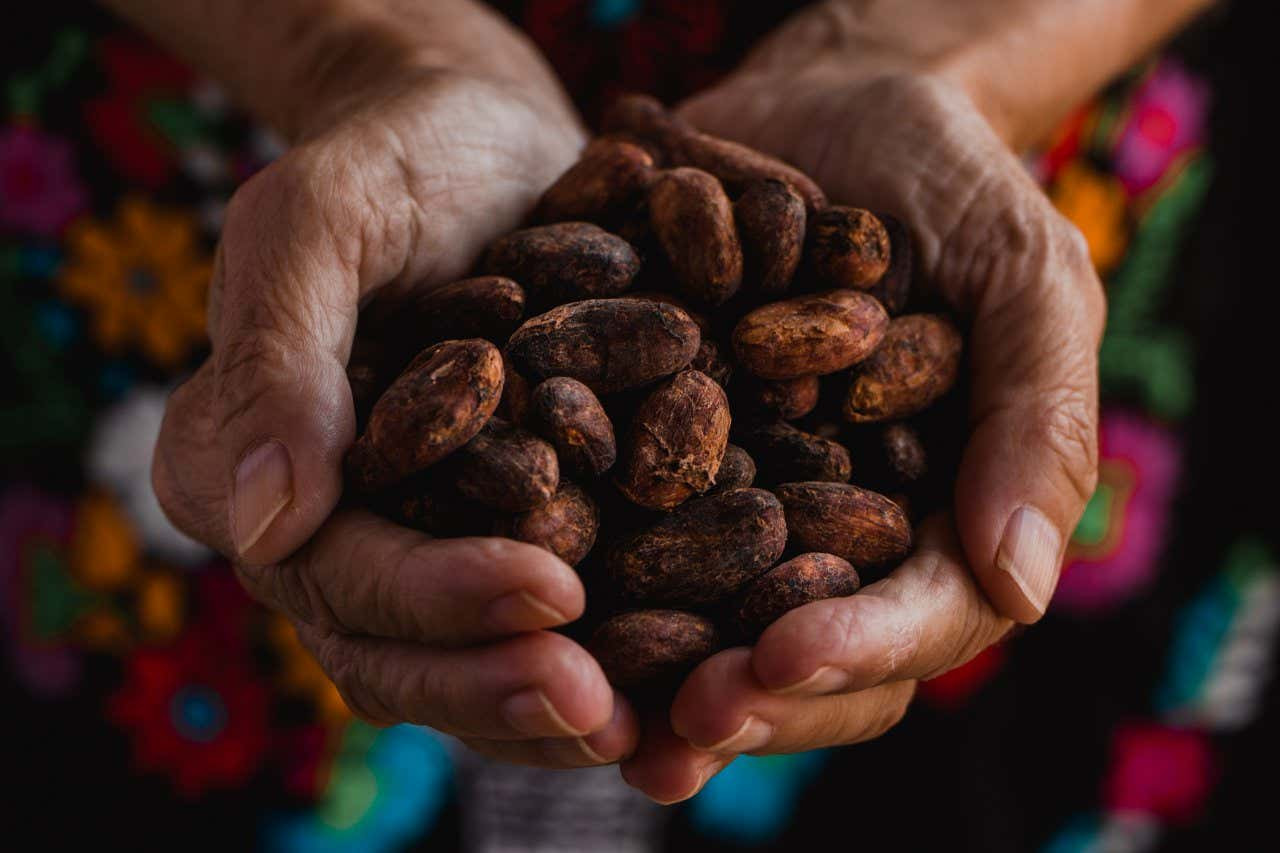 A close-up of someone
A close-up of someone
11. Is Mexico Home to One of The World’s Largest Pyramids?
Yes, Mexico is home to the Great Pyramid at Cholula, one of the largest pyramids in the world by volume. Although it may not be the tallest, its massive size is truly remarkable.
The Great Pyramid at Cholula is so vast that when the Spanish conquistadors arrived, they mistook it for a natural hill. According to the Universidad de las Américas Puebla, the pyramid was built over centuries, with different cultures adding to its structure. Today, visitors can explore the pyramid’s intricate tunnels and admire the Santuario de la Virgen de los Remedios church that sits atop it.
To witness this incredible site firsthand, consider taking a day trip from Mexico City to Cholula and Puebla.
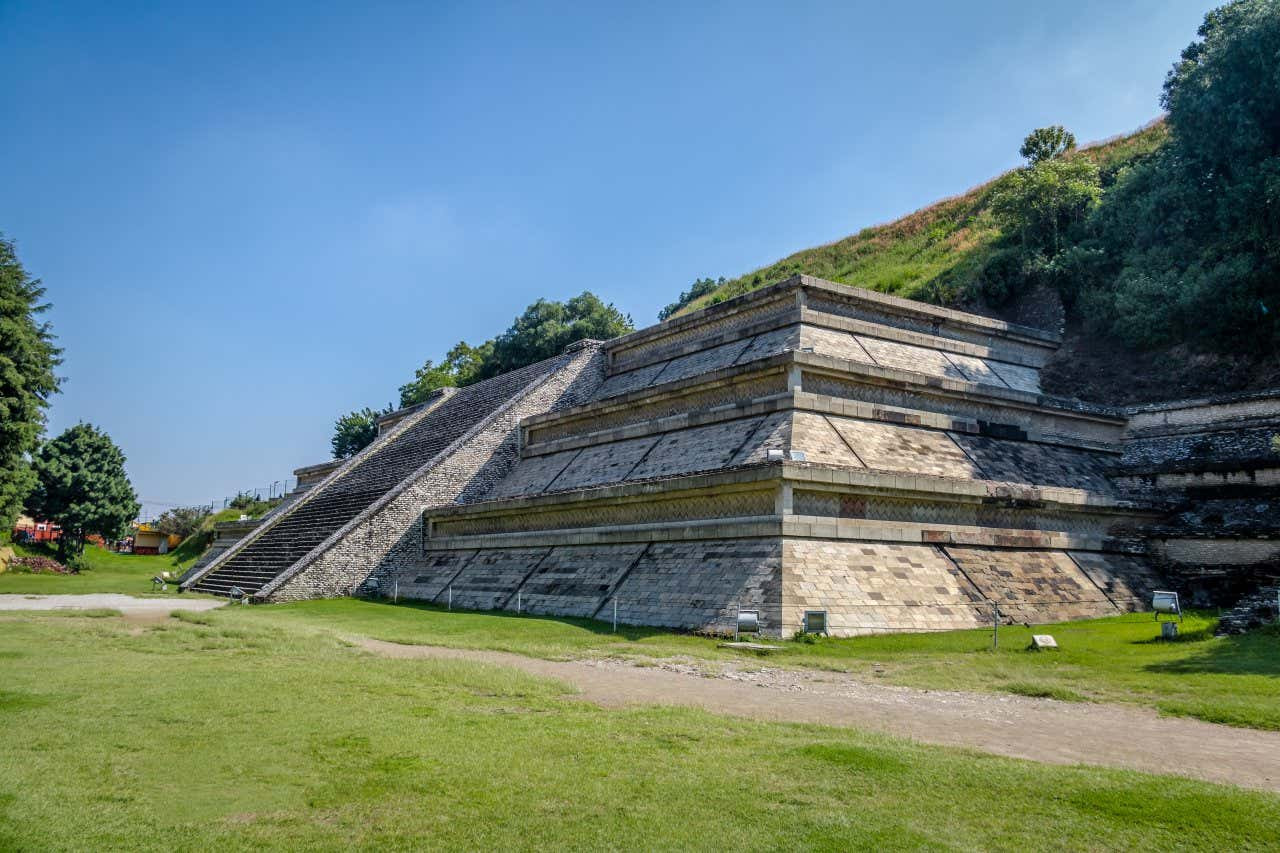 The Great Pyramid at Cholula seen on a sunny day with grass around it.
The Great Pyramid at Cholula seen on a sunny day with grass around it.
What Makes Mexico a Great Destination for LGBTQ+ Travelers?
Mexico has become increasingly popular as a destination for LGBTQ+ travelers, thanks to its welcoming atmosphere, vibrant culture, and diverse attractions. Cities like Puerto Vallarta, Mexico City, and Cancun offer thriving LGBTQ+ scenes with gay-friendly bars, clubs, hotels, and events.
Puerto Vallarta
Known as the “San Francisco of Mexico,” Puerto Vallarta is a leading LGBTQ+ destination with a lively Zona Romántica (Romantic Zone) that features numerous gay bars, clubs, and guesthouses. According to the International Gay & Lesbian Travel Association (IGLTA), Puerto Vallarta is recognized for its inclusive atmosphere and commitment to LGBTQ+ tourism.
Mexico City
Mexico City offers a sophisticated urban experience with a growing LGBTQ+ scene centered in the Zona Rosa neighborhood. The city hosts numerous LGBTQ+ events, including pride festivals and cultural celebrations. The local government actively supports LGBTQ+ rights and promotes inclusivity.
Cancun
While primarily known for its beaches and resorts, Cancun also has a growing LGBTQ+ presence, with several gay-friendly establishments and events catering to LGBTQ+ travelers.
Mexico’s progressive laws also contribute to its appeal as an LGBTQ+ destination. Same-sex marriage is legal throughout the country, and anti-discrimination laws protect LGBTQ+ individuals in many regions. These legal protections, combined with a generally accepting culture, make Mexico an attractive and safe destination for LGBTQ+ travelers.
Is Mexico Safe for LGBTQ+ Tourists?
While Mexico is generally considered safe for LGBTQ+ tourists, it’s important to be aware of regional differences and potential challenges. Major tourist destinations like Puerto Vallarta, Mexico City, and Cancun are known for their welcoming and inclusive environments. However, more conservative areas may present different attitudes.
According to Human Rights Watch, while Mexico has made significant progress in LGBTQ+ rights, discrimination and violence still occur, particularly in more rural areas. It’s advisable to research the specific destinations you plan to visit and exercise caution in less touristy areas.
Tips for Safe Travel in Mexico:
- Stick to Well-Known LGBTQ+ Destinations: Focus on cities and areas with established LGBTQ+ communities and resources.
- Use Reputable Services: Book accommodations and tours through LGBTQ+-friendly travel agencies and platforms.
- Stay Informed: Keep up-to-date on local laws and customs to ensure compliance and respect for cultural norms.
- Be Aware of Your Surroundings: Exercise the same level of caution you would in any unfamiliar environment.
- Report Incidents: If you experience discrimination or harassment, report it to local authorities and LGBTQ+ organizations.
Where Can LGBTQ+ Travelers Find Resources and Support in Mexico?
Mexico offers various resources and support networks for LGBTQ+ travelers and residents. These organizations provide information, advocacy, and assistance to the LGBTQ+ community.
Key LGBTQ+ Organizations in Mexico:
- All Out: An international organization that advocates for LGBTQ+ rights globally, including in Mexico.
- Letra S: A leading LGBTQ+ organization in Mexico that focuses on HIV/AIDS prevention and advocacy.
- Cuenta Conmigo: A Guadalajara-based organization providing support and resources for LGBTQ+ individuals and their families.
- Casa Frida: A shelter and support center for LGBTQ+ asylum seekers and refugees in Mexico City.
Online Resources:
- GayMexico.Net: A comprehensive website offering travel guides, event listings, and community resources for LGBTQ+ travelers in Mexico.
Address: 3255 Wilshire Blvd, Los Angeles, CA 90010, United States.
Phone: +1 (213) 380-2177.
Website: gaymexico.net. - IGLTA (International Gay & Lesbian Travel Association): Offers a directory of LGBTQ+-friendly accommodations, tour operators, and destinations worldwide.
- Equaldex: Provides up-to-date information on LGBTQ+ laws and social attitudes in Mexico.
What are Some Must-Visit LGBTQ+ Events and Festivals in Mexico?
Mexico hosts several vibrant LGBTQ+ events and festivals throughout the year, attracting both locals and international visitors. These events celebrate LGBTQ+ culture, promote inclusivity, and offer a platform for advocacy and community building.
Key LGBTQ+ Events in Mexico:
- Puerto Vallarta Pride: Held annually in May, this week-long celebration features parades, parties, cultural events, and community gatherings.
- Mexico City Pride (Marcha del Orgullo LGBT de la Ciudad de México): One of the largest pride parades in Latin America, typically held in June.
- Guadalajara Pride: A growing pride celebration in Guadalajara, featuring a parade, concerts, and cultural events.
- Arena Festival: A popular circuit party held in Puerto Vallarta during the New Year’s holiday, attracting thousands of LGBTQ+ revelers.
Are There Any Legal Protections for LGBTQ+ Individuals in Mexico?
Yes, Mexico has made significant strides in providing legal protections for LGBTQ+ individuals. Same-sex marriage is legal throughout the country, and anti-discrimination laws are in place in many regions.
Key Legal Protections:
- Same-Sex Marriage: Legalized nationwide in 2022, ensuring equal marriage rights for LGBTQ+ couples.
- Anti-Discrimination Laws: Many states and Mexico City have laws prohibiting discrimination based on sexual orientation and gender identity in employment, housing, and services.
- Gender Identity Recognition: Legal frameworks exist in some states to allow transgender individuals to change their legal gender.
How Can LGBTQ+ Travelers Ensure a Safe and Enjoyable Trip to Mexico?
Planning a safe and enjoyable trip to Mexico as an LGBTQ+ traveler involves research, preparation, and awareness.
Tips for Planning Your Trip:
- Research Destinations: Choose destinations known for their LGBTQ+-friendly atmosphere, such as Puerto Vallarta, Mexico City, and Cancun.
- Book LGBTQ+-Friendly Accommodations: Look for hotels, guesthouses, and resorts that cater to LGBTQ+ travelers and have a proven track record of inclusivity.
- Join LGBTQ+ Tours and Activities: Participate in tours and activities organized by LGBTQ+-friendly operators to connect with like-minded travelers and explore the local culture.
- Learn Basic Spanish Phrases: Knowing basic Spanish phrases can help you communicate with locals and navigate your way around.
- Stay Connected: Share your itinerary with friends or family and stay in touch regularly.
- Register with Your Embassy: Register your travel plans with your embassy or consulate for assistance in case of emergencies.
What are Some Resources for Learning About LGBTQ+ Culture in Mexico?
To deepen your understanding of LGBTQ+ culture in Mexico, several resources can provide valuable insights and information.
Recommended Resources:
- Academic Studies: Research studies and reports on LGBTQ+ issues in Mexico from universities and research institutions. According to research from the UCLA Williams Institute, in July 2025, data on LGBTQ+ demographics and social attitudes are provided.
- Documentaries: Watch documentaries that explore LGBTQ+ experiences and activism in Mexico.
- Literature: Read books and articles by Mexican LGBTQ+ authors and scholars.
- Online Forums and Communities: Engage with online forums and communities to connect with LGBTQ+ individuals in Mexico and learn about their experiences.
FAQ about Fun Facts About Mexico
What is Mexico best known for?
Mexico is best known for its rich culture, delicious cuisine, stunning beaches, and historical sites, including ancient ruins like Teotihuacan and Chichen Itza.
What is a unique tradition in Mexico?
A unique tradition in Mexico is the Day of the Dead (Día de los Muertos), a vibrant celebration where families honor and remember their deceased loved ones with colorful decorations, altars, and offerings.
What makes Mexican culture so unique?
Mexican culture is unique due to its blend of indigenous traditions, Spanish colonial influences, and modern innovations, creating a rich tapestry of art, music, dance, and cuisine.
Is Mexico a popular travel destination?
Yes, Mexico is a highly popular travel destination, attracting millions of tourists each year with its diverse attractions and warm hospitality.
What is the most visited place in Mexico?
One of the most visited places in Mexico is Cancun, known for its beautiful beaches, resorts, and vibrant nightlife.
Are Mexicans friendly to tourists?
Yes, Mexicans are generally known for being friendly and welcoming to tourists, making visitors feel at home.
What is the weather like in Mexico?
The weather in Mexico varies depending on the region, ranging from tropical on the coasts to arid in the north, with a generally warm and sunny climate.
What is a popular sport in Mexico?
A popular sport in Mexico is soccer (fútbol), with passionate fans and numerous professional teams.
What is Mexican food known for?
Mexican food is known for its bold flavors, diverse ingredients, and regional specialties, such as tacos, enchiladas, mole, and guacamole.
Is Mexico safe to visit?
While some areas of Mexico have safety concerns, many tourist destinations are generally safe, with precautions and awareness recommended.
Mexico offers a wealth of experiences and attractions for LGBTQ+ travelers, from its stunning natural landscapes to its vibrant cities and rich cultural heritage. By staying informed, planning ahead, and connecting with local resources, LGBTQ+ visitors can ensure a safe, enjoyable, and memorable trip to this fascinating country. Visit gaymexico.net to discover more about LGBTQ+ travel in Mexico, including detailed guides, event listings, and community resources. Let us help you plan your next adventure in Mexico, where you can explore the beauty and diversity of this incredible destination with confidence and pride.